
Let’s look at how a single source can proceed through the layers of progressive summarization.
These are Layer 1 notes I took on an article on postrationalism, a topic I’m interested in. This is 373 words, which would take about 2 minutes to read at an average reading speed. 2 minutes doesn’t seem like much, but when you consider that these notes could have no relevance to the task at hand, it’s a lot of attention to pay for nothing. Especially considering this is dense, challenging material.
For Layer 2, I bolded what I thought were the key points:
We’re down to 181 words now, about half as long. But it’s the best half, which means a lot of value has been added. It will only take me a minute to get the gist of this note now, and spacing out the bold passages also makes reading faster.
For Layer 3, I highlighted the best of the best parts:
Now we’re down to just 60 words in 3 sections, which I can scan in 10–20 seconds. This is 6–12 times faster than the full, Layer 1 notes (not to mention the full original article). Imagine what you could accomplish consuming sources 6–12 times faster, OR consuming 6–12 times as many sources in the same amount of time. While at the same time, repackaging those insights in a form that Future You can easily find and use.
Let’s do an experiment: in about 20 seconds, scan just those 3 highlighted passages. Are they enough to give you the gist of this article? I’ll wait…
The answer is, probably not! They are enough for me only because of my personal context, prior reading, and experience summarizing this note. This is why this summarization process has to be done manually and individually. There are some layers and some sources where external tools can help, but until we develop not only artificial intelligence, but extended artificial cognition, summarization won’t be something we can fully outsource.
By the way, this example illustrates why tags will never be adequate for long-term, open-ended research. The following are words and terms found somewhere in this text. Can you imagine how complex your tagging system would have to be to cover even part of this list?
The text itself is its own best tagging system. I think we should focus on surfacing the key terms already found there, instead of dreaming up tags. Because here’s the catch: even if you used tags to find this note, you would still have to evaluate it quickly for relevance.
Here’s another example of Layer 3 notes, from the book The Future of Work by Jacob Morgan, which you can view in their entirety here:
I didn’t find the book particularly insightful. It was mostly a listing of major trends I already knew about. But it does contain lots of good research findings, which I can use for my own purposes, including in some cases to make opposing arguments. This is why usefulness is such a, well, useful thing to look for: it’s like walking through a junkyard for pieces of junk cars you can rip out and repurpose. You aren’t limited to the perspective or knowledge of the author. You start your own thinking at the level of the best thinking out there, instead of at ground level.
With these most useful parts highlighted, Future Me’s attention is brought directly to them. He will be able to quickly scan the highlighted parts, and load up those juicy tidbits without having to re-read the whole book, which would be a waste of time.
Here’s another example of Layer 4 notes, from the book The Race by Eliyahu Goldratt:
This book was so influential on my thinking that my Layer 1 notes were practically a book unto themselves. I wanted to capture every fascinating example and detail, so it’s heavy on context, at the price of discoverability.
To improve its discoverability, I added an executive summary (Layer 4) at the top. By scanning this summary I can remember the gist of the book, and if anything is unclear, I can easily do a search of the full notes just below.
This note was originally created in July of 2016 when I read the book, added 4 layers of summarization between July and December, and in January of 2017 was incorporated into one of my all-time favorite posts, The Throughput of Learning. That one phrase highlighted in the screenshot above was the key breakthrough I needed to make that argument possible. Who could have ever predicted that the history of inventory turnover would have anything to do with an article on learning and personal growth?
One final example, of a Layer 5 note:
I read the book Ask Questions, Get Sales, and found the question-based sales technique very compelling. I knew just highlighting the text wouldn’t infect it into my thinking, so I decided to create “sketchnotes” of the book’s key points.
Making the ideas visual required me to think about them more deeply, to decide what I agreed with and didn’t, to emphasize parts that applied most directly to my work, and to experiment with how best to represent abstract concepts. All of these helped me integrate the knowledge much more deeply, as something I’ve interacted with, not just passively consumed. And by the way, Evernote’s text recognition works pretty well on hand-writing, so these images are searchable.
That was a lot of information, so in the spirit of compression, let me give you the bottom line.
With Progressive Summarization, we are summarizing our notes, and then summarizing that summary, then summarizing that summary, distilling the ideas into smaller and smaller layers each time.
With these layers exposed, we can do a flyby in the “airplane of discoverability,” quickly scanning the peaks, to decide if this mountain has anything to do with what we’re looking for.
But we’ve also preserved all the layers in context, so if we see a peak that looks promising, we can dive right in with our “parachute of understanding,” drilling down as deep as we need to:
Use Progressive Summarization
to create easy-to-review notes
I'll send you my Progressive Summarization Cheat Sheet PDF as a thank you when you subscribe to my free weekly newsletter below.
Subscribe
Look out for an email from hello@fortelabs.co
JUNGLES VS. ISLANDS
Most people’s notes are like a dense jungle. There’s lots of interesting stuff in there, but who would ever know? The gems are hidden and obscured. There’s no discoverability.
Progressive Summarization turns the jungle into an archipelago of islands. It reveals your personal information landscape — the unique topography of your goals, values, interests, and pursuits. With a clear landscape, you gain the ability to steer. Toward what you like, or don’t. Toward what makes you comfortable, or what doesn’t. Toward what you need, or what you want. You are the pilot, so you decide.
MIND AS STAGING GROUND
With a method in hand for rapidly capturing knowledge and compressing it into multi-layered packets for easy retrieval, the whole game of learning is transformed.
Not only is it okay if I don’t remember the vast majority of what I read, that actually becomes my goal. I want to offload what I’ve learned as quickly as possible, so I can forget it as quickly as possible. I want my mind to be an empty vessel, a staging ground where ideas briefly stop in their journey from the outside world, to my second brain. This is what it looks like to be fully present, and to also reach my intellectual potential. To leave my mind free and clear for each new experience, while also building something that lasts.
Here’s the crucial thing to understand: I don’t summarize notes on any sort of schedule, in any particular order, or as a part of a workflow. I summarize them completely opportunistically, when I’m already reviewing the note for some other purpose anyway.
This seems to be very hard for most people to understand, or to trust. It runs contrary to everything we’ve been taught about knowledge as some sort of fungible commodity, like oil or soybeans. Your second brain is not a factory where every piece has to flow through each layer, in sequence, on a strict timetable. It is a network — with local neighborhoods, city centers, and superhighways all changing in different ways, at different speeds, as it should be.
A given note may not be summarized until months or years after it’s been captured. Many notes may never be summarized. This is not just acceptable, it is absolutely fundamental to focusing your attention primarily on your most valuable notes. This is how your first brain works: use it or lose it. You have to be comfortable not only letting things fall through the cracks, but placing the cracks strategically so notes that don’t end up being useful automatically recede from your attention.
The great power of digital technology — that it never forgets anything — is a curse in an era of attention deficit. We need to add to our “digital cognition” mechanisms for forgetting. The best way to do this, I believe, is to build mechanisms for directing attention. But it takes attention to direct attention. Progressive Summarization is an alliance between your current and future selves, a pact in which your current self pays forward any insights they encounter, in exchange for your future self capitalizing on them at some point in the future.
But alliances across time are risky business. Current Self can’t afford to do big, heavy lifts meticulously organizing hundreds of notes upfront. Who knows if that work will ever pay off? I’ve been burned by such speculative investments before: after years of painstakingly organizing, categorizing, and labeling the songs in my iTunes library, Spotify came out, and I never opened iTunes again.
Progressive Summarization is really a method for creating value in an environment of uncertainty. You do concrete, relatively easy work now instead of speculative, difficult work for later. You pull time-consuming, but risk-free activities (reading, highlighting, summarizing) as early in time as possible, and push quick but risky activities (execution, decision making, delivery) as far into the future as possible. This way, you have all the ammunition you need ready and waiting at a moment’s notice, while waiting until the eve of battle to decide which target to attack.
If you follow the simple rule of summarizing a note every time you touch it, you’ll organically create a collection where the layers of summarization correspond to how integral that note is to your work. You can see at a glance how important a note is, without reading a word, just by how many layers it contains. Projects that fall apart won’t be as traumatic, because you’ll have lots of notes you summarized and packaged along the way. Once again, you get all the benefits of planning and organization, while spending virtually no time planning or organizing.
In Part III, I’ll give you a few guidelines and principles to make your summarization as effective as possible
Find Out What
Comes Next in Tech.
Start your free trial.
New ideas to help you build the future—in your inbox, every day. Trusted by over 75,000 readers.
SubscribeAlready have an account? Sign in
What's included?
-
Unlimited access to our daily essays by Dan Shipper, Evan Armstrong, and a roster of the best tech writers on the internet
-
Full access to an archive of hundreds of in-depth articles
-
-
Priority access and subscriber-only discounts to courses, events, and more
-
Ad-free experience
-
Access to our Discord community
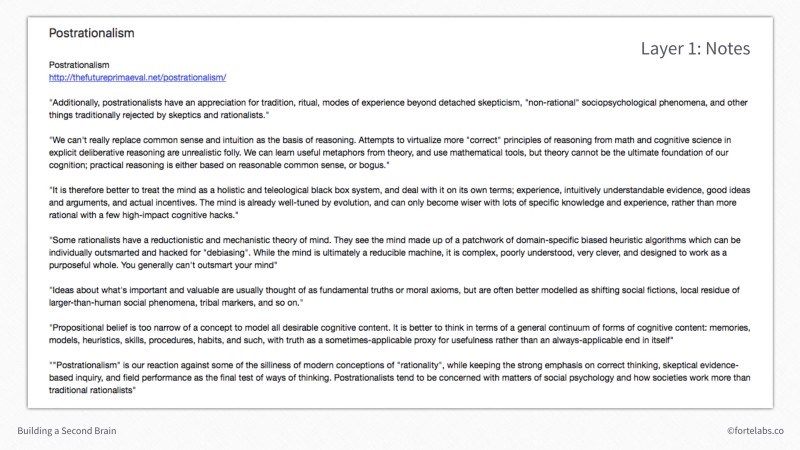
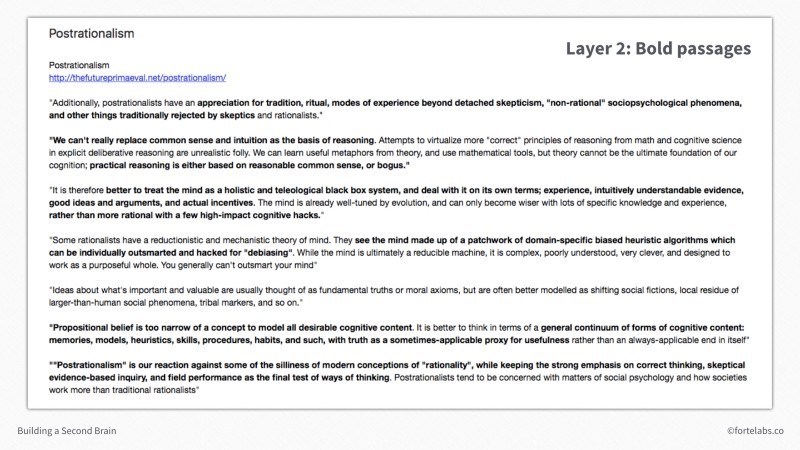
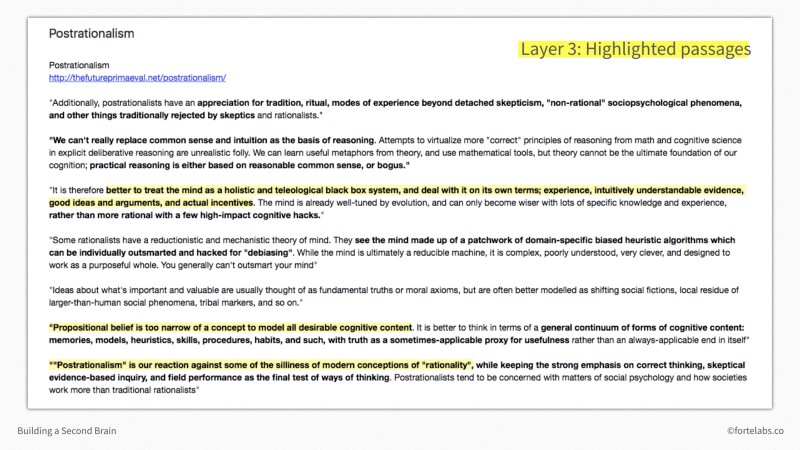

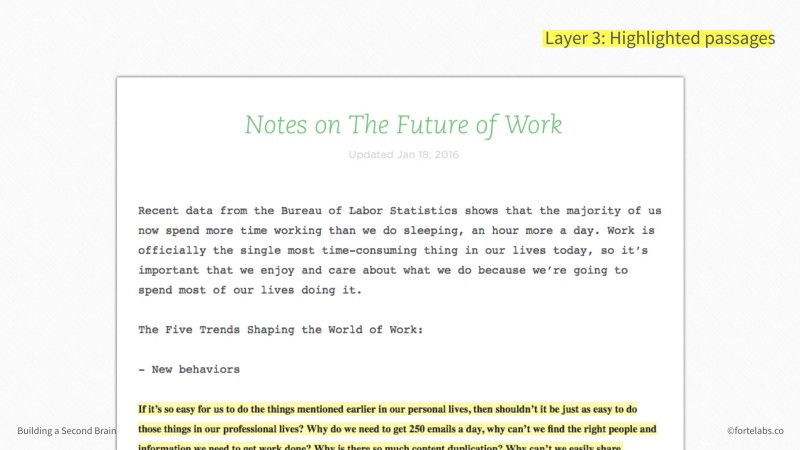
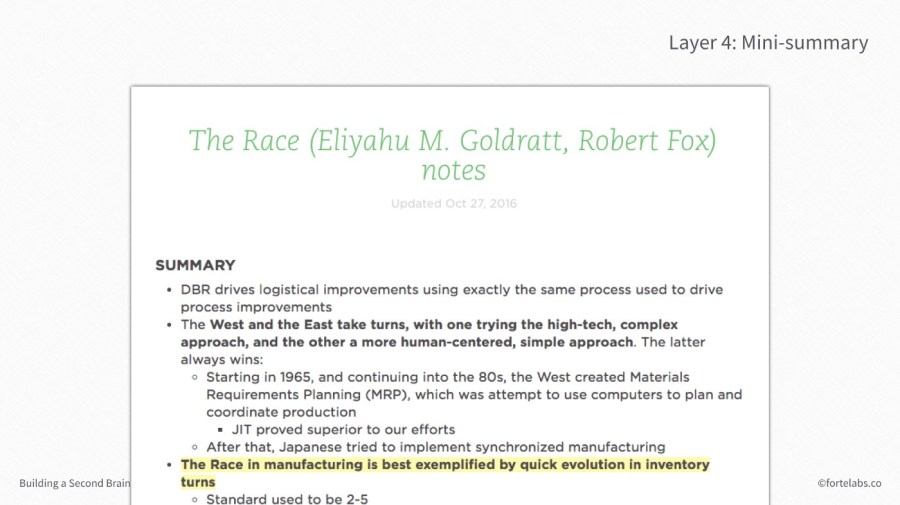
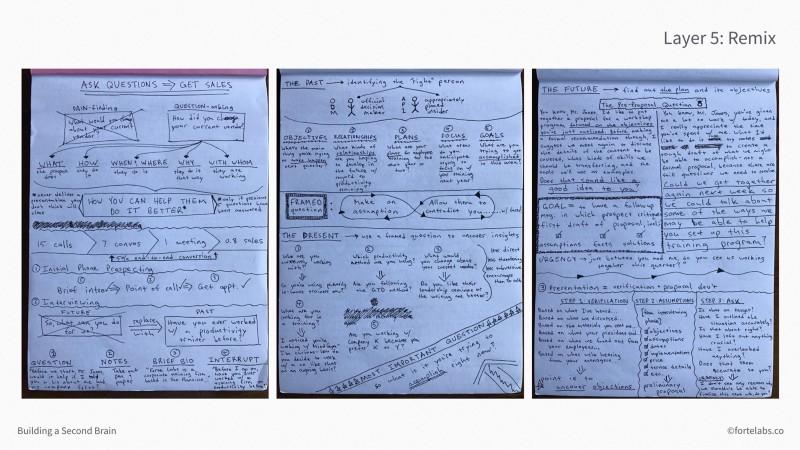

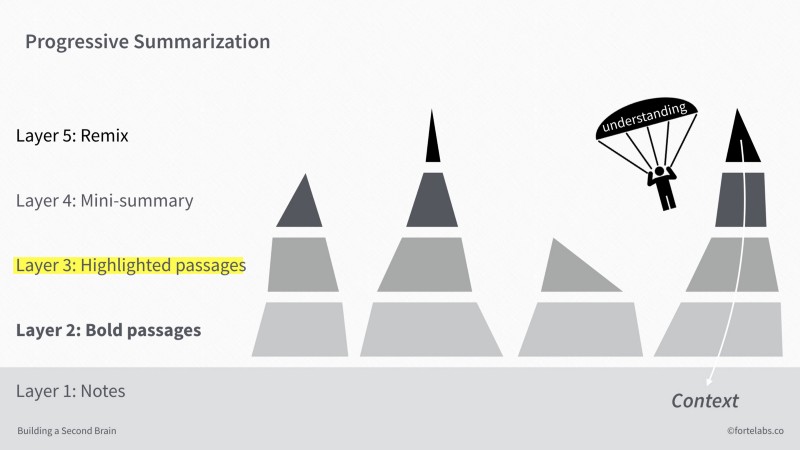



Comments
Don't have an account? Sign up!